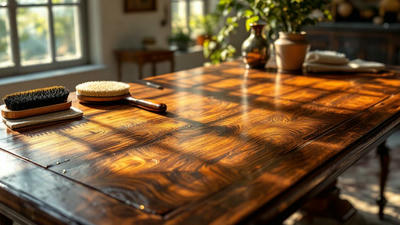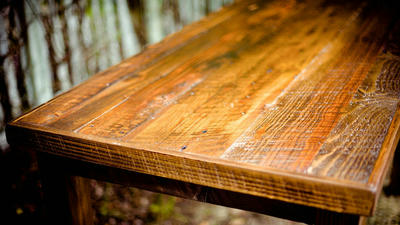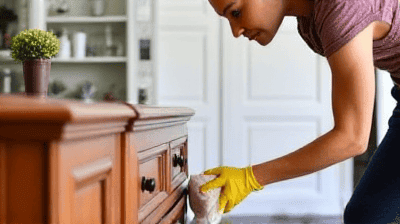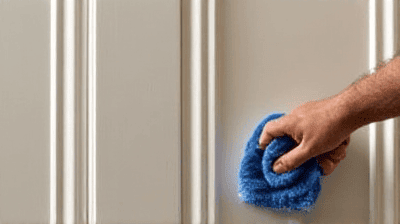
Every home deserves furniture and fixtures that shine and enhance the beauty of your living space. Over time, however, dust, grime, and daily wear and tear can diminish the luster of these items. Polishing is an essential part of home care that can restore that shine and prolong the life of your furniture and fixtures.
Polishing refers to the process of applying a substance—such as oil, wax, or a specialized cleaner—to a surface to improve its appearance and protect it from damage. The main goals of polishing include:
Regular polishing benefits your home in several ways:

Wooden furniture is a common feature in many homes. It adds warmth and character to spaces but can be susceptible to scratches, water marks, and fading. Understanding how to polish wood is essential for maintaining its beauty.
Metal fixtures, such as doorknobs, light fixtures, and decorative pieces, can become tarnished and lose their shine over time. Different metals, such as brass, copper, and stainless steel, require specific care to restore their appearance.
Glass tables, mirrors, and decorations can show fingerprints, streaks, and dust. Polishing glass surfaces not only improves their appearance but also enhances their clarity.
Leather brings elegance to any space but requires special care to prevent cracking and fading. Knowing how to properly polish and condition leather can keep it looking luxurious.
Natural stone surfaces, such as marble and granite, can become dull over time. Polishing stone not only enhances its beauty but also adds a layer of protection.
Before you begin polishing, it's essential to prepare your space and gather the necessary tools and materials.
Evaluate the current condition of the furniture or fixture you plan to polish. Look for any noticeable stains, scratches, or damage. Understanding the state of the item will help you select the appropriate products and techniques for polishing.
A crucial step before polishing is thoroughly cleaning the surface. Dust and dirt can create scratches during the polishing process if left on the surface. Here are some general cleaning tips:
Having the right tools and products on hand will make the polishing process smoother. Here is a list of items you may need:

Wooden furniture can vary greatly in its finish, so it's important to identify the type of wood and finish before proceeding with polishing.
Wood finishes can be categorized into different types, each requiring specific care:
Choose the Right Polish: Select a polish appropriate for the wood finish you have. Options include beeswax, lemon oil, or commercial wood polish.
Apply the Polish: Dampen a clean cloth with the polish and apply it in the direction of the wood grain. Be sure to cover the entire surface evenly.
Let It Set: Allow the polish to penetrate for a few minutes, following the product instructions.
Buff the Surface: Use a separate clean, dry cloth to buff the surface, again working in the direction of the grain. This will help bring out the shine and remove any excess polish.
Inspect and Repeat: After buffing, inspect the furniture. If it needs more shine, repeat the application process until you achieve the desired look.
Metal fixtures can add elegance to your home, but they require special care to maintain their shine.
Different metals require specific polishing techniques:
Select the Appropriate Cleaner: Choose a metal polish that matches the type of metal you are working with.
Apply the Polish: Use a soft cloth or applicator to apply the polish evenly over the metal surface.
Buff the Surface: Once the polish has set for the recommended time, use a clean, dry cloth to buff the metal, restoring its shine.
Final Wipe: For stainless steel, consider wiping down with a mixture of equal parts vinegar and water to remove any streaks.

Glass surfaces, including tables and mirrors, are prone to fingerprints and dust. To maintain their clarity, polishing is essential.
For glass polishing, you can use commercial glass cleaners or create a homemade solution with equal parts vinegar and water.
Clean the Surface: Begin by dusting the glass surface using a microfiber cloth.
Apply the Cleaner: Spray the glass cleaner generously on the surface or directly onto a clean cloth.
Wipe in Circular Motions: Use the cloth to wipe in circular motions, ensuring thorough coverage without streaks.
Buff the Surface: After cleaning, use a dry microfiber cloth to buff the glass for extra shine.
Leather adds sophistication to any space but requires special care to maintain its appearance and durability.
Clean the Surface: Use a damp cloth to remove dust and dirt, ensuring the leather is clean before applying any products.
Apply Leather Conditioner: A leather conditioner should be used instead of traditional polish. Apply a small amount to a soft cloth and work it into the leather using circular motions.
Allow to Absorb: Let the conditioner absorb into the leather for a few minutes before buffing.
Buff the Surface: Use a clean cloth to gently buff the leather surface, enhancing its shine.
Natural stone surfaces, such as marble and granite, can dull over time due to wear and tear. Proper polishing restores their shine and luster.
Natural stones may have different finishes, including polished, honed, or textured. Understanding the finish helps determine the polishing technique needed.
Clean the Surface: Begin by mopping or wiping the stone surface with a pH-neutral cleaner.
Choose a Stone Polish: Select a polish that is specifically designed for the type of stone you are cleaning. For instance, marble polish is different from granite polish.
Apply the Polish: A soft cloth or sponge should be used to apply the polish evenly across the stone surface.
Buff the Surface: After the polish has been allowed to sit for the recommended time, buff the surface using a clean, dry cloth until the desired shine is achieved.
While polishing can significantly enhance the appearance of your furniture and fixtures, there are common mistakes that should be avoided to achieve the best results.
Always test any new polishing product on a small, inconspicuous area before applying it widely. This will help you determine if the product is suitable for the surface and will not cause any damage.
Using too much polish can lead to buildup, which can make surfaces look dull over time. Always follow the manufacturer's recommendations for product usage.
Polishing over a dirty surface can cause scratches and may not yield the desired shine. Be sure to clean thoroughly before applying polish.
Regular maintenance can prevent the need for extensive polishing. Create a cleaning routine that includes regular dusting and conditioning.
Once you have polished your furniture and fixtures, maintaining that shine requires ongoing care. Here are some tips to help keep your items in top condition:
Dust surfaces regularly to prevent dirt buildup. Use a microfiber cloth to trap dust without scratching surfaces.
Deal with spills and stains immediately. Most surfaces are easier to clean when addressed right away.
Where possible, control the environment of your home to protect furniture and fixtures. Avoid excessive sunlight and humidity, which can cause damage over time.
Incorporate polishing into your seasonal cleaning routine. Whether it’s quarterly or biannually, a designated time to polish ensures that furniture and fixtures stay looking their best.
Polishing is a vital aspect of home care that helps restore shine and protect your investments in furniture and fixtures. By understanding the different materials in your home and how to care for them, you can maintain a polished, beautiful living space.
Throughout this guide, we have explored various techniques for polishing different surfaces, from wooden furniture to metal fixtures, glass, leather, and stone. By following best practices and avoiding common mistakes, you can achieve impressive results that enhance the aesthetic appeal and longevity of your belongings.
Investing time and effort into proper polishing will not only improve the look of your home but also contribute to a healthier living environment. Start polishing today and enjoy the beauty of your refurbished furniture and fixtures for years to come.